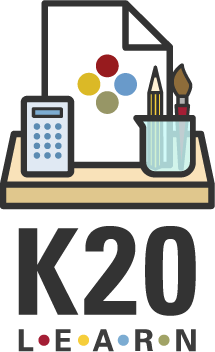Summary
Students will investigate the similarity of reproduction, embryonic development, and DNA sequences to illustrate the indirect evidence for evolution. This lesson is adapted for a middle school class.
Essential Question(s)
How do we decide what to believe about evolutionary claims?
Snapshot
Engage
Students listen to the storybook An Egg Is Quiet then discuss observations from the book.
Explore
Students attempt to sort embryo images into similar groups.
Explain
Students use a second card sort and analysis questions to draw conclusions.
Extend
Students analyze a graph to draw conclusions about similarities between organisms.
Evaluate
Students answer open response questions to collect their thoughts and ideas.
Materials
Lesson Slides (attached)
An Egg Is Quiet by Dianna Aston
Student Version Embryo Card Sort (attached; print one-sided; cut out; one per group of 2-3)
Teacher Version Embryo Card Sort (attached)
Explain Card Sort (attached; print one-sided; cut out; one per group of 2-3)
Analysis Questions (attached; print one-side; one half-sheet per student)
Animal Embryo Development Graph (attached; print one-side; one per student)
I Used to Think But Now I Know handout (attached; print one-sided; one half-sheet per student)
Sticky notes (one stack per group of 2-3)
Preparation
Before beginning the lesson, gather and prepare all necessary materials and handouts. If using a physical copy of An Egg Is Quiet by Dianna Aston, ensure it is available and ready for use during the Engage phase. If the book is not available, plan to show the read-aloud video An Egg Is Quiet instead.
Print and cut out the following materials:
Student Version Embryo Card Sort: Print one-sided and cut out one full Card Sort (both Set A and B) per group of 2–3 students.
Explain Card Sort: Print one-sided and cut out one set per group of 2–3 students.
Engage
10 Minute(s)
Open the attached Lesson Slides. Review the essential question and lesson objectives on slide 3–4.
Move to slide 5, have students take out a piece of paper, and introduce students to the I Notice, I Wonder instructional strategy. On their paper, ask them to make two columns labeling the left column “I Notice” and the right column “I Wonder.” Explain to students that they will be listening to a book, and as they listen, they should write down observations they notice and questions or topics they have regarding the content.
Read the picture book An Egg Is Quiet by Dianna Aston to students.
After you have finished the book, provide students a few minutes to complete their I Notice, I Wonder chart.
Display slide 6. Pair students up and have them share what they've written. If needed, revisit the book (or copies of the book’s pages) to either reinforce the observations they made or to revise them. Also, encourage students to use this time to discuss the questions they wrote and decide if rereading the book would answer the questions or if further investigation is needed.
Explore
20 Minute(s)
Display slide 7. Introduce the Card Sort instructional strategy and pass out the Embryo Card Sort cards labeled as “Set A” from the attached Student Version Embryo Cards to groups of two or three students. Prompt students to group together embryos that they think are similar. There are no duplicates, so each animal is unique, and possible categories could be mammals, reptiles, amphibians, etc. Try to leave the prompt open-ended, such as, “Group together what you think are similar.” Some students might think the cards show the same animals in different developmental stages, but that’s part of the process.
When students are done, move to slide 8 and pass out a stack of sticky notes to each group of students. Have students participate in a modified Gallery Walk. Students should use as many sticky notes as they have groupings. On each sticky note, have students write why they chose to group specific cards together for each category. These will become category headings. Then, prompt groups to rotate and read the other groups' ideas. When a full rotation has happened, give time for students to decide if they want to change their original groupings or not.
Expand on the idea by passing out the “Set B” Embryo Card Sort cards from the same document to each group, so that both Set A and Set B are together. Provide the prompt again to create groups. Students will probably understand that the idea is to pair the embryo with the developed animal but try not to give it away.
The answers of what embryo is what animal are included in the attached Teacher Guide?and Lesson Slides (slides 9–17) to show students. Before showing the answers on the slides, allow students to experience a healthy struggle with the card sort activity.
Explain
25 Minute(s)
Let students keep the Embryo Card Sort cards for reference during the Explain and some of the Extend.
Display slide 18. Hand out the attached Explain Card Sort cards, which have a few of the stages of a chicken embryo and a mouse embryo. Read the prompt provided on the slide: "There are two sets. Separate them and put each set in order." Allow students to work on this in pairs.
Once students have addressed the card sort prompt, move to slide 19 and distribute the attached Analysis Questions handout. Review the Inverted Pyramid strategy. Have students answer the analysis questions individually on their handout before having them share with partners. Ask pairs to create a shared answer that represents both of their answers.
Next, have pairs join together to make a group of four, sharing again, this time with a focus on the statements generated. Once the groups of four construct a singe, shared statement, ask each group to share with the whole class. Write each group’s statement on the board for everyone to see.
From here, move to slide 20 and explain to students how all organisms develop in the same stages, called Carnegie Stages, but they go through those stages at different rates and sizes. Explain how the organ shapes will be different for different animals, but the stages to develop those organs themselves are all the same.
Extend
20 Minute(s)
Move to slide 24 and distribute the attached Animal Embryo Development Graph to each student. Have them construct the chart and answer the questions. Allow them to use this data to support their products in the Evaluate section.
Evaluate
Display slide 25 and pass out the attached I Used to Think But Now I Know half-sheet handout. Allow students about 5 minutes to reflect on what was presented to them and compare what they used to think about embryos and fetal development with what they now know on their handouts, using the I Used to Think…But Now I Know instructional strategy. Have students share their responses with a partner before turning their responses in as an Exit Ticket.
Resources
K20 Center. (n.d.). Bell ringers and exit tickets. Strategies. https://learn.k20center.ou.edu/strategy/125
K20 Center. (n.d.). Card sort. Strategies. https://learn.k20center.ou.edu/strategy/147
K20 Center. (n.d.). Gallery walk/carousel. Strategies. https://learn.k20center.ou.edu/strategy/118
K20 Center. (n.d.). Inverted pyramid. Strategies. https://learn.k20center.ou.edu/strategy/173
K20 Center. (n.d.). I notice, I wonder. Strategies. https://learn.k20center.ou.edu/strategy/180
K20 Center. (n.d.). I used to think…but now I know. Strategies. https://learn.k20center.ou.edu/strategy/137
Sunshine lemonade. (2016). An egg is quiet [Video of book read-aloud]. YouTube. https://www.youtube.com/watch?v=KgVaNbrCayU



